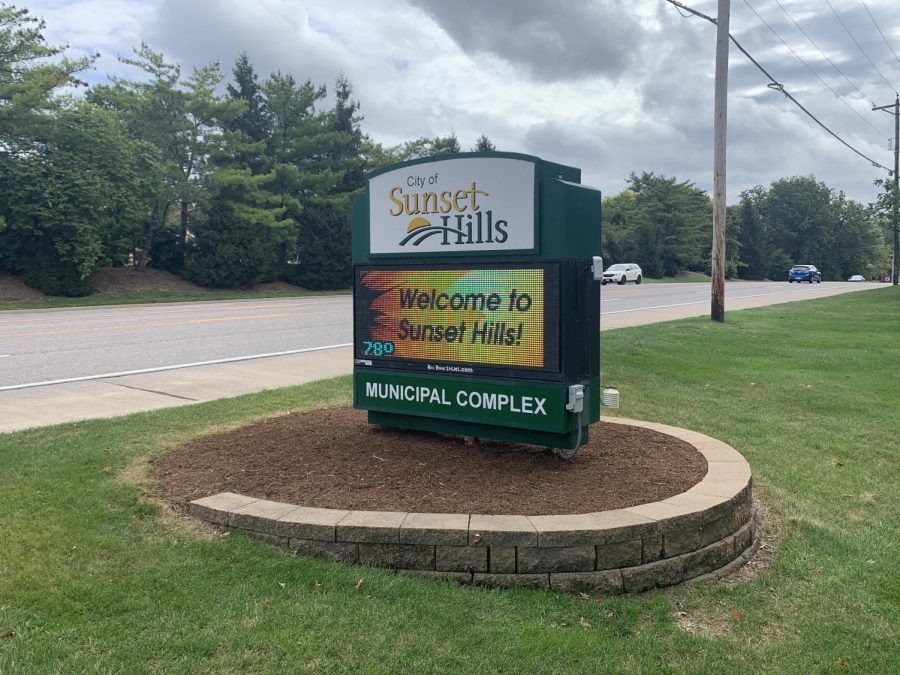First in a series
By MIKE ANTHONY
Executive Editor
A recently adopted resolution authorizing Crestwood City Ad-ministrator Don Greer to initiate the process of defeasing bond-like certificates issued in late 2002 to fund the construction of a new police facility likely will bring an end to a project that dates back to May 2000.
Aldermen voted 6-0 July 12 to approve the resolution, which states the Board of Aldermen intends to defease the bond-like certificates before Oct. 15 when a principal and interest payment totaling roughly $553,500 is due. Ward 1 Alderman Richard LaBore and Ward 3 Alderman Don Maddox were absent.
Defeasing the balance of the $9.83 million in certificates of participation, or COPs, issued to fund the police facility would bring an end to the project, which has become a focal point of residents’ dissatisfaction with the city’s precarious financial condition. Roughly $1.6 million has been spent to date on the project.
Here’s a chronology of the police facility project based on city documents and published accounts in the Call:
May 8, 2000 — Greer, the city’s police chief, informed the Police Board about problems with the current police facility at City Hall and the board voted to request the Board of Aldermen review the city’s capital improvement priorities.
Nov. 27, 2000 — Police Board members heard a presentation about capital needs, including security, additional space, operation issues and equipment. The presentation also included suggestions to remedy the capital needs of the Police Department.
Feb. 12, 2001 — During a meeting of the Police Board, Greer stated that a feasibility study would be the next step in the process.
Feb. 13, 2001 — During a Board of Aldermen meeting, Ward 1 Alderman Richard Breeding stated that the Police Department has requested that aldermen consider how the department would be able to add an addition to the existing police facility or construct a new facility in the future.
June 11, 2001 — Greer told the Police Board that he had spoken with several architectural firms and reported that money is available in the budget for a feasibility study, estimated to cost $30,000.
Oct. 31, 2001 — In a memo to then-City Administrator Kent Leichliter, Greer reported that eight requests for proposals for a feasibility study were sent out and three firms responded. Horner & Shifrin Inc. emerged as the strongest candidate. After Greer and then-Assistant City Admin-istrator Matt Conley visited some police buildings de-signed by Redstone Architects Inc., a review committee reached a consensus that that Horner & Shifrin along with Redstone Architects provided the necessary elements for the feasibility study.
Nov. 27, 2001 — Leichliter told the Board of Aldermen that a proposal to either expand the city’s existing police facility or construct a new police facility would require the removal of the sunset provision of a half-cent capital-improvement sales tax, which was scheduled to end in 2008. The Board of Aldermen voted unanimously to approve an ordinance authorizing then-Mayor Jim Bras-field to enter into an agreement with Horner & Shifrin Inc. for a feasibility study to examine the Police Department’s facility needs, which would take about three months to complete. As the board considered awarding a contract not to exceed $31,500 to Horner & Shifrin Inc. for the feasibility study, Leichliter said approval of the contract would be the first step toward other financial decisions that would have to be made by aldermen, including possibly placing a ballot measure before voters next year.
May 14, 2002 — The completed feasibility study ex-amining the facility needs of the Crestwood Police Depart-ment projects a new police headquarters building totaling 41,717 square feet that would cost $10.3 million. Steve Knarr of Horner & Shifrin and Dan Redstone of Redstone Architects presented the results of the study to the Board of Aldermen. As part of the study, a needs assessment was conducted to determine the projected requirements for the city’s Police Department, “based on internal projections of growth and service to the community.” The study calls for a two-level facility to be built on property to the north of the existing City Hall at 1 Detjen Drive. Of the 41,717-square-foot facility projected by the study, 33,200 square feet would house traditional police operations, while about 8,500 square feet would house a firing range and classroom, situational training, a forensics garage and a bike garage. At the same meeting, Leichliter told aldermen that the cost of a $10 million police building probably would be more than the city could afford.
May 21, 2002 — The maximum amount of money the city could spend to construct a new police station with revenue from the city’s half-cent capital-improvement sales tax would be about $8 million, Leichliter told aldermen. Furthermore, he said, funding a new $8 million police station would be contingent on receiving voter approval to extend the capital-improvement sales tax for a 15-year period beginning when bond-like certificates would be issued to fund the project. During a work session, Greer presented a scaled-down version of a new police station that he said would meet the department’s current needs and provide for some future growth. Based upon maintaining current levels of service, Greer’s proposal would reduce the cost of a new police station — including construction, site costs, professional fees and furniture, fixtures and equipment — by nearly $1.85 million — to $8,481,954.24 from $10,331,628.40. The police chief’s proposal called for a 33,458-square-foot police headquarters building with a functioning square footage of 22,815 square feet.
May 28, 2002 — The Board of Aldermen voted to place on the Aug. 6 ballot a measure asking voters to extend the city’s half-cent capital-improvement sales tax for a 15-year period. As proposed, the extension of the sales tax would fund the construction of a new police station, provide revenue for needed renovations and repairs at City Hall and allow for the continuation of the city’s street repair and replacement program. If voters agree to extend the sales tax by 15 years — to 2023 — bond-like certificates called certificates of participation would be sold to fund the construction of a new police facility and be re-paid over an estimated 20-year period.
Aug. 1, 2002 — The Call endorses Proposition S, stating that the extension of the sales tax would fund the construction of a new police station, provide revenue for needed renovations and repairs at City Hall and allow for the continuation of the city’s street repair and replacement program. “… We urge Crestwood residents to vote in favor of Proposition S. By doing so, they are not voting for a tax-rate increase, but for the continuation of an existing tax for a 15-year period,” the endorsement stated.
In a news article in the same issue, resident Roger Anderson opposed Proposition S. “The Police Department probably needs a new police station,” Anderson said. “In fact, we probably need a new city hall and fire station. What I am against is the way they want to do this and the time that they want to do this.
“This isn’t the funding mechanism to build it and right now, Crestwood doesn’t have the commercial revenue to pay for all of these projects. But if the Watson Road corridor is revamped and starts bringing in more money, new facilities can be built without new taxes or extensions of existing taxes,” he added.
Aug. 6, 2002 — Crestwood voters overwhelmingly approve Proposition S. The measure received 1,986 “yes” votes — 59.11 percent — and 1,374 “no” votes — 40.89 percent. A simple majority was required for approval. Of the city’s nearly 8,900 registered voters, nearly 3,500 — 39 percent — cast ballots in the election.
Aug. 15, 2002 — With the approval of Proposition S, then-Mayor Jim Robertson said that city officials have “a tremendous responsibility” to ensure those revenues are spent wisely, the Call reported. Now that voters have approved the extension of the sales tax, Robertson said he believed the process for a new police facility will move at a fairly rapid pace. “I’d like to think it will happen fairly quickly,” Rob-ertson said, noting he anticipates further discussion, though, about the exact needs of the Police Department and how much the city is willing to spend.
Oct. 22, 2002 — The board voted unanimously to “preliminarily select” Edward Jones and BA Securities as the underwriter for the sale of certificates of participation that will be used to fund the construction of a new police station and renovations to City Hall. By preliminarily selecting an underwriter for the sale of the bond-like certificates, Conley told aldermen they “would only be approving the concept to proceed. He indicated additional work would have to be done by the company, and basically they would not want to expend time in doing the work necessary to draw the documents if there wasn’t some preliminary approval by the city of Crestwood,” according to minutes of the meeting.
Nov. 21, 2002 — The Call reported that some Board of Aldermen members were shocked to learn Nov. 12 that a preliminary vote taken two weeks earlier essentially had committed the board to approving the sale of bond-like certificates totaling $9.83 million. At least one alderman, Don Maddox of Ward 3, contended that he had been “flat-out misled … if not lied to” regarding the ramifications of the earlier vote. Aldermen who wanted to explore alternative measures of financing the new police station and City Hall work learned that the board essentially had been committed to approving the sale of the certificates because Edward Jones had conducted a “presale” with orders for about 99 percent of the certificates. Given that, the board voted 6-2 to approve an ordinance authorizing the sale of $9.83 million worth of certificates of participation.
Maddox and Ward 2 Alderman Tim Trueblood were opposed. The certificates, which carry an average interest rate of 4.21 percent, will be retired over a 20-year period with revenue from the city’s half-cent capital-improvement sales tax. The city’s payments are $730,000 per year. In-terest over the 20-year period would total roughly $4.8 million, bringing the total cost to $14.6 million.
Before the vote was taken, some aldermen expressed concerns about the city’s ability to fund the repayment of the certificates, citing a downturn in city sales-tax revenue, and wanted assurances that the city’s street maintenance and repair program, which is funded by the capital-improvements sales-tax fund, would continue at its current level. Some aldermen also wanted to explore whether the board could delay selling certificates for a year or two and accumulate money in the capital-improvements fund for the new police station and then issue a lesser amount of certificates of participation, thereby re-ducing interest costs.
Dec. 10, 2002 — The Board of Alder-men voted unanimously in a closed session to name Greer city administrator. Greer had served as the city’s police chief since 1990 and will continue in that role. The Board of Aldermen also voted unanimously to approve a “reassignment agreement” in which Leichliter would retire from his post at the end of the year and become an ad-viser to the Board of Aldermen until March 2004.
Jan. 14, 2003 — Greer presented re-vised plans to the Board of Aldermen that call for a 28,930-square-foot police ad-ministration building that will cost about $7.524 million. Greer also asked aldermen to consider including a municipal court in the new building. Including the municipal court would increase the size of the new police facility by 1,400 feet — to 30,340 square feet — and add $300,000 to the cost.
Jan. 28, 2003 — The Board of Alder-men voted unanimously to include a municipal court in the city’s proposed po-lice facility. Two consulting firms working with the city on the project — Horner & Shifrin and Redstone Architects — now estimate the cost of the police facility with the municipal court will be $7.824 million. As proposed, schematic designs would be presented to aldermen May 13 for their review and the board would consider final approval of those designs May 27. As proposed, construction would begin early next year.
March 10, 2003 — Greer presented current drawings of the police building to the Police Board, indicating some changes already had been made and additional changes were expected.
The chronology continues next week.






















